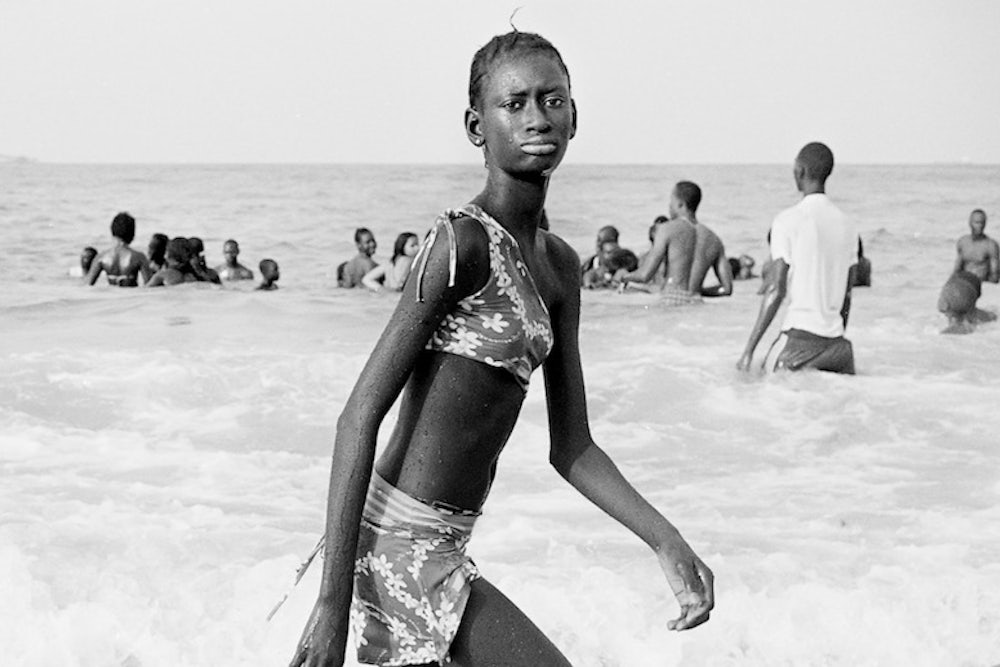Situated off the coast of Senegal, Gorée Island served as one of the largest slave-trading centers on the African coast from the 1530s to the 1840s. The beaches that provided the backdrop to centuries of Portuguese, Dutch, English, and French rule are the starting point for Fabrice Monteiro's "Gorean Summer," now on view at Seattle's M.I.A. Gallery. Though Gorée, a UNESCO World Heritage site commemorating the African diaspora, has become a popular destination for tourists, its shores also attract members of the local population during the summer months. In this series, Monteiro, who lives and works in Dakar, has documented the vibrancy of local beach culture. The lighthearted scenes in his photography are a poignant contrast to the city's dark history and a powerful testament to the universal pleasures of a summer day at the beach.












